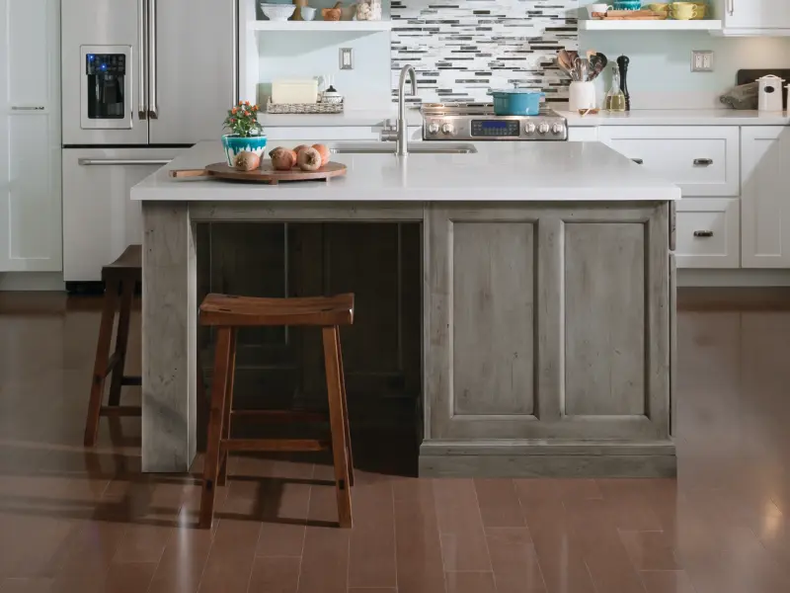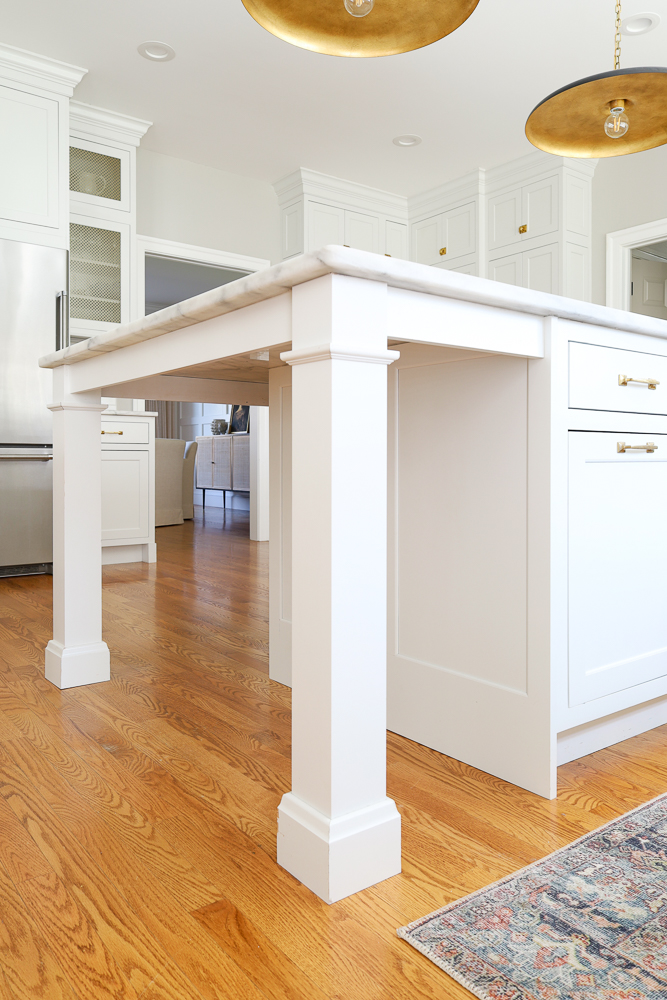Change Your Kitchen's Appearance with One-of-a-kind Legs For Kitchen Island Devices
Change Your Kitchen's Appearance with One-of-a-kind Legs For Kitchen Island Devices
Blog Article
Essential Factors to Take Into Consideration When Choosing Legs For Kitchen Area Island
Choosing the suitable legs for a cooking area island entails a cautious assessment of numerous factors that can dramatically affect both performance and visual charm. Amongst these, the selection of material plays a critical role in ensuring toughness, while the style has to complement the existing decoration. Factors to consider such as height and weight assistance are crucial for stability and convenience. As we check out these components, it comes to be clear that each choice can have significant implications for the total kitchen experience. What subtleties should be thought about in each of these groups to achieve the excellent balance?
Product Options
When selecting legs for a kitchen area island, recognizing the numerous material choices is necessary for achieving both aesthetic charm and architectural honesty (Legs For Kitchen Island). The selection of material considerably affects not just the durability of the island but likewise its general layout and capability
Wood is a popular choice, using heat and adaptability. Strong woods, such as oak or maple, provide strength and can be stained or painted to match the kitchen design. Metal legs, typically made from stainless steel or functioned iron, contribute a contemporary and industrial feel while guaranteeing sturdiness and security. These materials are resistant to wear and can support substantial weight, making them ideal for larger islands.
One more option is crafted products, like MDF or plywood, which can be a lot more affordable while still providing a series of surfaces. However, they might not give the same degree of security as strong timber or metal. Finally, materials such as acrylic or glass can develop a modern look, though they might need additional assistance to make sure stability.
Eventually, the selection of product for kitchen island legs need to line up with the desired capability and the total theme of the cooking area.
Style and Layout

When considering design, the form and coating of the legs are essential. Conical legs can give a feeling of agility and sophistication, while thicker, a lot more durable legs can communicate stamina and stability. Additionally, the finish-- be it repainted, tarnished, or all-natural-- ought to complement the cabinetry and countertop products to develop a unified look.
Furthermore, the design of the legs can additionally mirror individual taste. Custom or decorative legs, such as those including complex carvings or unique geometric forms, can offer as focal points, adding personality and character to the kitchen. Inevitably, the ideal option will not just improve functionality yet likewise elevate the visual charm, making the kitchen area island a standout feature of the home.
Elevation Considerations
Choosing the investigate this site proper height for cooking area island legs is vital, as it directly influences both performance and convenience. The common height for a cooking area island usually ranges from 36 to 42 inches, lining up with common kitchen counter heights. A 36-inch elevation is perfect for food prep work and cooking, permitting comfortable use kitchen devices and tools. On the other hand, an elevation of 42 inches is typically preferred for islands meant for bar seats, accommodating taller feceses and offering a laid-back eating experience.

It is additionally vital to account for customers' choices and heights. Tailoring the height can make certain a comfortable experience for all household members, making the kitchen island a much more functional and delightful area.
Weight Assistance
Guaranteeing adequate weight support for view it cooking area island legs is important for both safety and security and performance. The cooking area island typically offers several objectives, including cooking, eating, and additional storage space, necessitating a robust assistance structure. When choosing legs, it is critical to think about the total weight capacity needed based upon the island's planned use and the materials that will certainly be placed on it.
The option of material for the legs plays a considerable duty in their weight-bearing capabilities. Strong wood, metal, and heavy-duty composites normally supply premium strength compared to lighter materials. In addition, the style of the legs-- whether they are directly, tapered, or have a pedestal type-- can affect their capability to distribute weight efficiently throughout the framework.
Constantly get in touch with the supplier's requirements pertaining to tons limitations to guarantee that the legs can sustain the intended weight without endangering safety and security. In recap, choosing kitchen island legs with adequate weight assistance is crucial for producing a risk-free and functional culinary space.
Installment and Upkeep
Appropriate installation and upkeep of kitchen area island legs are crucial for ensuring long click this site life and security. To begin, it is necessary to adhere to the producer's guidelines throughout installation. This often entails securing the legs to the space station utilizing appropriate bolts, guaranteeing that the legs are degree and lined up. Utilizing a degree tool can assist prevent tottering and enhance the total aesthetic allure of the kitchen island.
When mounted, routine upkeep is necessary to protect the honesty and appearance of the legs - Legs For Kitchen Island. For wooden legs, routine cleansing with a damp fabric and application of ideal wood polish can protect against moisture damage and preserve their coating. Metal legs may call for a mild cleaning service to eliminate oil and grime, followed by a completely dry towel to prevent rust formation
Furthermore, check the legs regularly for signs of wear or damage, such as cracks or loose joints. Tightening screws or screws as required can also lengthen the life-span of the legs. By sticking to these setup and maintenance techniques, house owners can guarantee that their kitchen area island continues to be tough and aesthetically appealing for years to come.
Conclusion

Aesthetic coherence is critical in choosing the design and layout of legs for a cooking area island, as these components greatly influence the overall ambiance of the space. Tapered legs can offer a sense of lightness and beauty, while thicker, a lot more durable legs can communicate stamina and stability.Selecting the proper height for kitchen area island legs is important, as it directly affects both performance and comfort. In summary, selecting cooking area island legs with adequate weight assistance is crucial for developing a secure and useful culinary space.
In verdict, picking legs for a cooking area island requires cautious consideration of numerous variables, consisting of material options, design, elevation, weight support, and installation.
Report this page